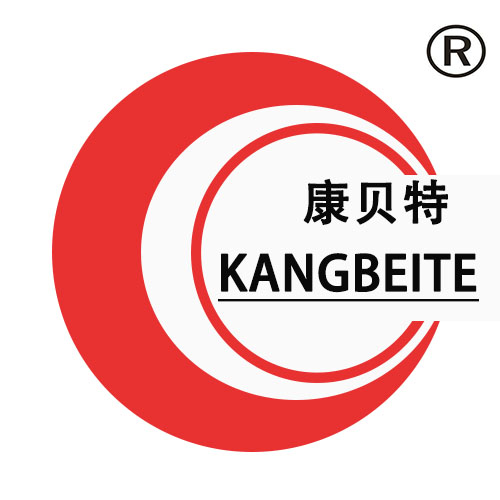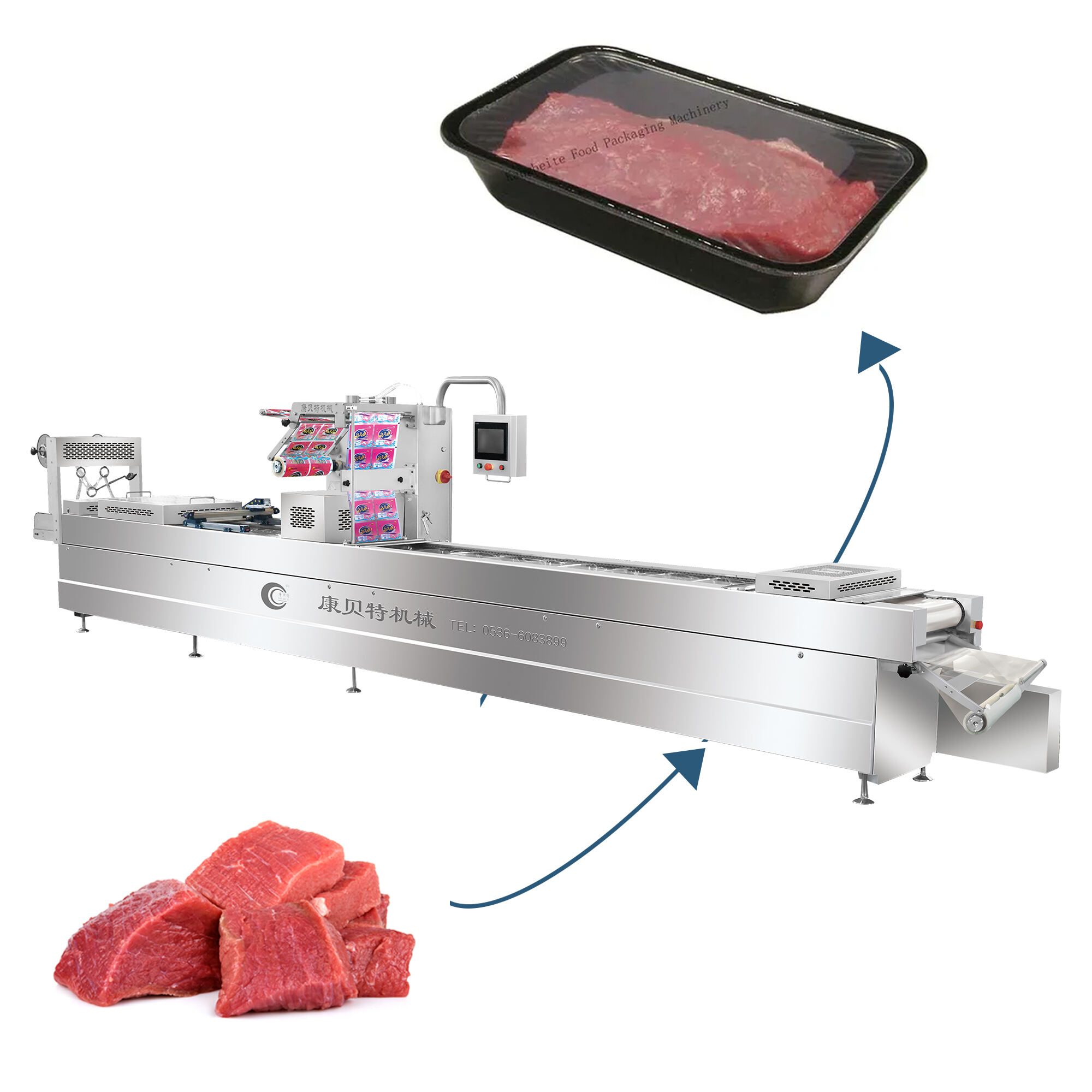Why Vacuum Packaging Machines Are Essential for Meat Preservation
How Vacuum Sealing Extends Shelf Life by Removing Oxygen
Vacuum packaging removes nearly all the air from food packages, which creates an environment without oxygen. This helps slow down oxidation processes and stops most bacteria from growing since they need oxygen to survive. When it comes to how long meat stays fresh in the fridge, vacuum sealing makes a big difference. Beef packed this way can last around 35 days before going bad, whereas regular packaging only keeps it fresh for about 7 days according to research from the American Meat Science Association back in 2023. Without oxygen present, the meat maintains its color better and doesn't lose flavor as quickly because the fats don't break down. This means the product looks good on store shelves and tastes great when customers finally buy it.
Preventing Bacterial Growth and Maintaining Meat Freshness
When we remove oxygen from the equation, vacuum packaging does a pretty good job at stopping those pesky spoilage bacteria like Pseudomonas and Acinetobacter. Some lab results indicate that pork chops stored in vacuum sealed packages end up with about 80% fewer bacteria growing on them after two weeks compared to regular meat left out in the open. Now here's something important to remember though - even though there's no oxygen around, certain bad guys like Clostridium botulinum can still be a problem if things get too warm. Keeping everything nice and chilly below 3 degrees Celsius or 37 Fahrenheit really helps keep these nasties at bay. Another benefit worth mentioning is how vacuum sealing actually keeps moisture inside the meat. This means the pork stays juicy for longer periods and doesn't dry out on the surface while sitting in the fridge.
Enhancing Food Safety and Reducing Spoilage in Meat Products
Vacuum packaging creates an airtight seal that stops germs from jumping between products. A recent USDA study found that chicken packed under vacuum had around 72 percent less Salmonella contamination compared to those sitting in plastic trays at grocery stores. This method also cuts down on juice leakage, something that can really spread bacteria around. Meat processors are seeing real benefits too. The improved stability means they waste about 40% less product overall, according to checks done by top meat suppliers across the country. For anyone running a food processing operation, these numbers matter quite a bit when looking at bottom line savings.
Commercial operations often pair vacuum packaging with controlled atmosphere storage to maintain meat integrity from processing to point-of-sale. This integrated approach supports compliance with FDA Food Safety Modernization Act standards for pathogen control, making vacuum sealing both a quality assurance measure and a regulatory necessity.
Critical Features to Evaluate in a Meat Vacuum Packaging Machine
Suction Power and Vacuum Chamber Size for Efficient Sealing
To get good results, look for vacuum sealers that offer suction power above 20 inches of mercury (inHg) since this helps remove most of the oxygen from the package. The chamber should be at least 15 inches by 10 inches to handle bigger meat portions such as brisket or pork loin while still keeping the sealing process efficient enough. Research indicates that these high suction models cut down on bacteria growth risk by about 30 percent when compared to cheaper alternatives according to Packaged Facts from last year. That makes sense because less oxygen means slower spoilage rates which is exactly what we want when storing food long term.
Sealing Durability and Consistency for Long-Term Reliability
Industrial-grade heat-seal elements should endure repeated high-temperature cycles without warping. Top-tier machines maintain 98% seal integrity over 10,000+ uses (International Packaged Goods Association 2023). Dual-seal tracks and adjustable temperature settings help prevent seal failures caused by fatty residues or uneven surfaces, especially important when packaging juicy or marbled meats.
Compatibility With High-Quality Vacuum Bags for Meat Packaging
Use 3€“5 mil multilayer bags made from nylon-polyethylene composites to resist punctures from bone fragments and ensure freezer-safe seals. These advanced materials reduce seal failure rates by 40% compared to standard polyethylene (Food Tech Journal 2023). Ensure your machine includes pressure controls compatible with thicker bag types to maintain consistent sealing performance.
Types of Vacuum Packaging Machines for Different Meat Processing Needs
Chamber vacuum sealers: Best for commercial meat operations
In commercial meat processing plants across the country, chamber vacuum sealers have pretty much become the go-to equipment when dealing with big batches of meat. These machines work by creating really deep vacuums under 1 millibar pressure inside a fully enclosed chamber around the product itself. That makes them especially good for sealing whole muscle cuts and those juicy marinated items that tend to leak during packaging. The best part? Most of these systems can complete a full sealing cycle in just 10 to 20 seconds flat, which is exactly what busy processing facilities need when they're running at capacity. According to some industry reports floating around lately, about four out of five facilities handling more than 5 tons per week stick with chamber models as their mainstay equipment.
External (outlet) vacuum sealers: Affordable option for small-scale use
For small butcher shops and family farms processing around 50 pounds of meat daily at most, external vacuum sealers represent an affordable way to get started. These smaller machines pull air out through the bag nozzle and handle things like individual steaks or packages of ground beef pretty well. The good news is prices stay reasonable, usually below $1500, but there's a trade-off. They don't create as strong or consistent a vacuum as higher end models, typically hitting between 50 to 100 mbar. Plus, operators need to use bags that are already sealed on three sides before starting. A word of caution worth remembering: anything with liquid content needs to be frozen solid before sealing. Otherwise, juices will end up dripping into the machine and causing all sorts of messes nobody wants to deal with after hours.
Automatic belt chamber machines for high speed industrial lines
When processing volumes go above 1,000 packages each hour, automatic belt chamber machines really shine in terms of both speed and reliability. These systems have two chambers that alternate operation, handling anywhere from 15 to 30 kilograms of product at a time whether it's bacon, sausage links, or pre-sliced meats. The vacuum levels stay pretty consistent too, within about 2% variance which makes all the difference for quality control. Some of the newer models come equipped with gas flush options for MAP packaging, something that's becoming increasingly important for higher-end cured meats where longer shelf life is absolutely critical for retailers and distributors alike.
Comparing chamber vs. external sealers for various meat types
| Feature | Chamber Sealer | External Sealer |
|---|---|---|
| Optimal Meat Type | Whole cuts, bone-in meats | Portioned cuts (steaks) |
| Batch Capacity | 5-20 packages/cycle | Single-bag processing |
| Vacuum Strength | 0.8-1.2 mbar | 50-100 mbar |
| Liquid Handling | Built-in drainage systems | Requires pre-freezing |
| Operational Cost | $0.12-$0.18 per package | $0.08-$0.12 per package |
Chamber sealers are best suited for thick or liquid-rich cuts like brisket, while external models are sufficient for smaller-scale packaging of daily portions. Facilities processing more than 500 lbs per week typically require chamber systems to meet food safety and throughput demands.
Maximizing Meat Quality: Preventing Freezer Burn and Texture Degradation
How Complete Air Removal Protects Against Freezer Burn
When meat sits in the freezer too long, it starts losing moisture to the air around it. This creates those pesky ice crystals we all know too well, which basically wreck the meat's internal structure and leave us with that unpleasant dry, leather-like texture nobody wants. The solution? Vacuum packaging works wonders here because it sucks out almost all the oxygen (like 99% of it), so there's nothing left for the moisture to escape into. Meat stored this way stays much fresher over time. Research from food science labs indicates that vacuum sealed cuts keep about four times as much moisture after half a year in the deep freeze compared to regular plastic wrap or butcher paper. That means significantly better taste and texture when we finally get around to cooking those steaks or chicken breasts we bought on sale.
Maintaining Color, Texture, and Flavor During Long-Term Frozen Storage
Effective vacuum sealing preserves meat quality through three key mechanisms:
- Oxidation Prevention: Eliminating oxygen slows myoglobin degradation, helping beef retain its red color up to 3€“4 months longer than non-vacuumed cuts.
- Ice Crystal Minimization: High-performance 3€“5 layer barrier bags reduce moisture loss by 62% (2023 Frozen Food Packaging Study), preserving cellular integrity.
- Flavor Lock: Airtight seals trap volatile aroma compounds, essential for maintaining the natural taste of poultry, seafood, and seasoned meats.
For best results, pair industrial vacuum sealers with FDA-approved films rated at ‰0.05g/m²/24hr water vapor transmission. This combination maintains steak tenderness at 85% of fresh levels even after 12 months at -18°C.
Ensuring Hygiene and Food Safety in Vacuum Packaging Operations
Minimizing cross contamination risks with sealed packaging
Vacuum packaging creates an airtight barrier that shields meat from external contaminants, a critical safeguard when handling raw products prone to pathogens like Salmonella or E. coli. A 2023 study in Food Protection Trends found that properly sealed vacuum packs reduce cross-contamination risk by 87% compared to conventional wrapping methods.
Easy to clean designs and sanitary machine materials
High-performance vacuum sealers feature stainless-steel construction and seamless surfaces to prevent microbial buildup. Look for models with removable sealing bars and crevice-free chambers that withstand high-pressure washing. These design elements enable compliance with the FDA€™s hygiene benchmark of fewer than 8 CFU/cm² on food-contact surfaces.
Meeting food safety standards in commercial meat packaging
Commercial vacuum packaging equipment must meet NSF/3-A sanitation standards and USDA material guidelines. Industrial units often include built in documentation systems to log seal integrity checks and sanitation cycles€”key components for FSMA compliance and successful facility inspections.
Table of Contents
- Why Vacuum Packaging Machines Are Essential for Meat Preservation
- Critical Features to Evaluate in a Meat Vacuum Packaging Machine
- Types of Vacuum Packaging Machines for Different Meat Processing Needs
- Maximizing Meat Quality: Preventing Freezer Burn and Texture Degradation
- Ensuring Hygiene and Food Safety in Vacuum Packaging Operations

